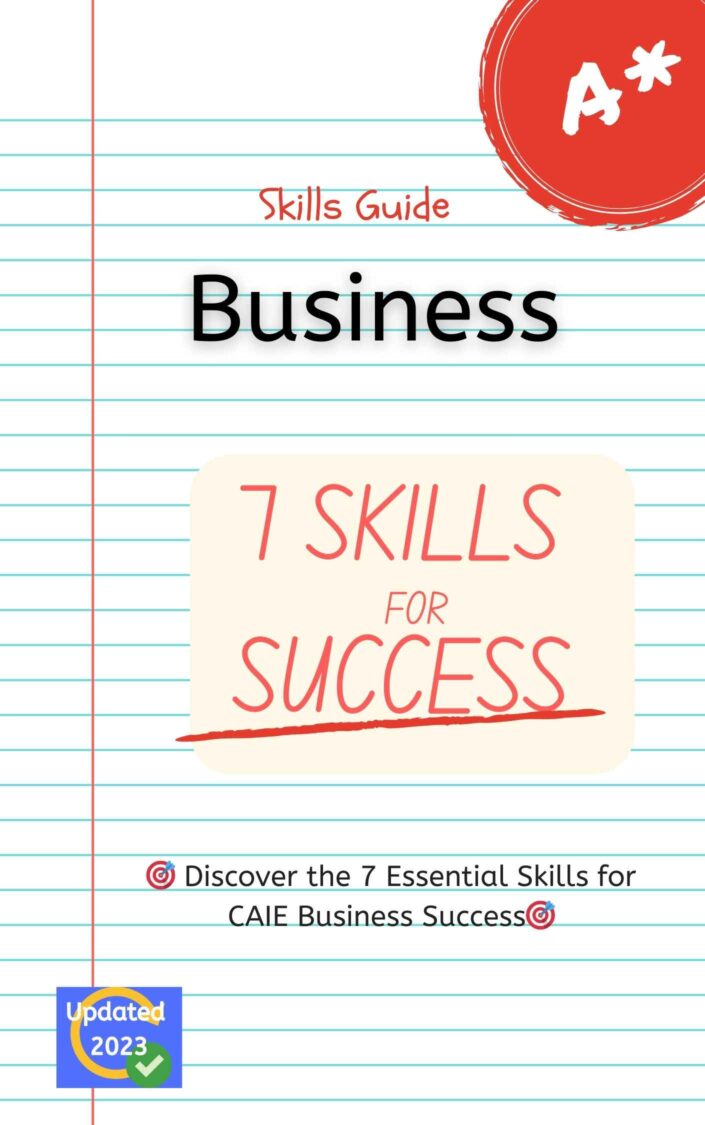PAPER 1
SECTION A
(a) 2 marks Paper 1
(a) Define the term ‘opportunity cost’. [2]
(a) Define the term ‘motivation’. [2]
(a) Define the term ‘workforce planning’. [2]
(a) Define the term ‘contract of employment’. [2]
(a) Define the term ‘redundancy’. [2]
(a) Define the term ‘training’. [2]
(a) Define the term ‘customer (market) orientation’. [2]
(a) Define the term ‘market segmentation’. [2]
(a) Define the term sampling’. [2]
(a) Define the term ‘outsourcing’. [2]
(a) Define the term ‘productivity’. [2]
(a) Define the term ‘job production’. [2]
(a) Define the term ‘venture capital’. [2]
(b) 3 marks Paper 1
(b) Explain one reason why many new businesses fail in their first year of operation. [3]
(b) Explain one benefit to a business of having motivated employees. [3]
(b) Explain one benefit to a business of workforce planning. [3]
(b) Explain one advantage to an employer of using a person specification. [3]
(b) Explain one advantage to employees of having a contract of employment. [3]
(b) Explain one benefit to a business of training employees. [3]
(b) Explain one limitation of niche marketing. [3]
(b) Explain one reason why a business might segment its market [3]
(b) Explain one advantage to a business of using primary (field) market research data. [3]
(b) Explain one disadvantage to a business of using price discrimination. [3]
(b) Explain one benefit to a business of flow production as a method of operation. [3]
(b) Explain one benefit to a business of using equity finance. [3]
(b) Explain one benefit to a business of using venture capitalist[3]
5 marks Paper 1
Analyse one way in which the triple bottom line may influence the activities of a business. [5]
Analyse how the interests of one stakeholder groups could affect the decisions of a business. [5]
Analyse one benefit of using internal sources of finance for business growth. [5]
SECTION B
(a) Analysis 8 marks Paper 1
(a) Analyse the impact of social enterprises on the development of a country. [8]
(a) Analyse two benefits of a labour-intensive production process for a business. [8]
(b) Discuss 12 marks Paper 1
PAPER 2
(a)(i) 1 marks Paper 2
(a) (ii) Identify one indirect cost [1]
(a)(ii) 3 marks Paper 2
Explain the term ‘industrial markets’ . [3]
Explain the term ‘brand’ . [3]
(b)(i) 2 marks Paper 2
b (i) Refer to Table 1.1. Calculate the rate of labour turnover for department A in 2020. [3]
(b) (i) Refer to Table 1. Calculate BIG’s working capital. [3]
(b)(ii) 3 marks Paper 2
b (ii) Explain one suitable way, other than market share, to measure the size of F5G. [3]
b (ii) Explain one disadvantage for RHZ of having high labour turnover. [3]
(b) (ii) Explain one factor influencing the supply of the retro cycle.[3]
(b)(ii)Explain one benefit of Nativity Trees marketing its products to industrial markets [3]
b (ii) Explain one way in which EMB can use the Internet to increase sales. [3]
b (ii) Explain one benefit of NT holding inventory. [3]
(b) (ii) Explain one reason why AA needs accurate cost data. [3]
(c) Analysis 8 marks Paper 2
(c) Analyse two qualities that Gordon will need to be a successful entrepreneur. [8]
(c) Analyse two methods HC could use to extend the product life cycle of the Retro Cycle. [8]
c) Analyse two promotional methods F5G could use to gain new customers. [8]
(c) Analyse two ways in which AA adds value to its products. [8]
(d) Evaluation Paper 2
(d) Evaluate the likely impact on the stakeholders of AA of the planned expansion. [12]
d) Evaluate changes EMB could make to its marketing mix to achieve its growth objective [12]
PAPER 3
8 marks
Analyse one advantage and one disadvantage to BFS of the government of country Z encouraging international trade with other countries [8]
Analyse two advantages to BFS of producing high quality solar panels? [8]
12 Marks
Evaluate whether the sushi stall project is likely to improve profitability for FS [12]
Evaluate whether potential investors should purchase shares in BFS. (12)
Evaluate the effectiveness of BFS’s approach to human resource management (HRM).[12]
Paper 4
20 Marks
Evaluate how business planning can improve E-Ventures future profitability. [20]


